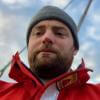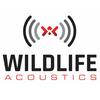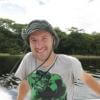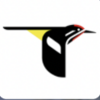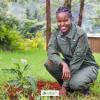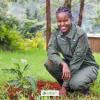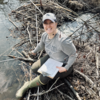Acoustic sensors enable efficient and non-invasive monitoring of a wide range of species, including many that are difficult to monitor in other ways. Although they were initially limited in application scope largely due to cost and hardware constraints, the development of low-cost, open-source models like the Audiomoth in recent years has increased access immensely and opened up new avenues of research. For example, some teams are using them to identify illicit human activities through the detection of associated sounds, like gunshots, vehicles, or chainsaws (e.g. OpenEars).
With this relatively novel dimension of wildlife monitoring rapidly advancing in both marine and terrestrial systems, it is crucial that we identify and share information about the utility and constraints of these sensors to inform efforts. A recent study identified advancements in hardware and machine learning applications, as well as early development of acoustic biodiversity indicators, as factors facilitating progress in the field. In terms of limitations, the authors highlight insufficient reference sound libraries, a lack of open-source audio processing tools, and a need for standardization of survey and analysis protocols. They also stress the importance of collaboration in moving forward, which is precisely what this group will aim to facilitate.
If you're new to acoustic monitoring and want to get up to speed on the basics, check out these beginner's resources and conversations from across the WILDLABS platform:
Three Resources for Beginners:
- Listening to Nature: The Emerging Field of Bioacoustics, Adam Welz
- Ecoacoustics and Biodiversity Monitoring, RSEC Journal
- Monitoring Ecosystems through Sound: The Present and Future of Passive Acoustics, Ella Browning and Rory Gibb
Three Forum Threads for Beginners:
- AudioMoth user guide | Tessa Rhinehart
- Audiomoth and Natterjack Monitoring (UK) | Stuart Newson
- Help with analysing bat recordings from Audiomoth | Carlos Abrahams
Three Tutorials for Beginners:
- "How do I perform automated recordings of bird assemblages?" | Carlos Abrahams, Tech Tutors
- "How do I scale up acoustic surveys with Audiomoths and automated processing?" | Tessa Rhinehart, Tech Tutors
- Acoustic Monitoring | David Watson, Ruby Lee, Andy Hill, and Dimitri Ponirakis, Virtual Meetups
Want to know more about acoustic monitoring and learn from experts in the WILDLABS community? Jump into the discussion in our Acoustic Monitoring group!
Header image: Carly Batist
No showcases have been added to this group yet.
- @myoung
- | She/Her
- 0 Resources
- 0 Discussions
- 3 Groups
Lecturer and researcher interested in rural applications of Interaction Design. Spent more than a decade teaching in Asia-Pacific (India, China, Singapore, Australia); now based at Glasgow School of Art's rural campus in Forres, Scottish Highlands.
- 0 Resources
- 0 Discussions
- 5 Groups
Snow Leopard Trust


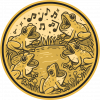
- 0 Resources
- 44 Discussions
- 6 Groups
- 0 Resources
- 0 Discussions
- 5 Groups
Wildlife Conservation Society (WCS)
I am a biologist interested in land use change impacts on biodiversity and sustainable value chains. I work with productive sectors, incorporating biodiversity conservation as a criteria for planning and managing productive systems.
- 0 Resources
- 0 Discussions
- 4 Groups
- @jcturn3
- | He/Him
Colorado State University
I am a graduate student at Colorado State University working to develop novel acoustic technology for remotely monitoring wildlife.


- 0 Resources
- 14 Discussions
- 3 Groups
British-Costa Rican | Interested in transdisciplinary research in Planetary Health amongst other things

- 0 Resources
- 1 Discussions
- 13 Groups
- @Rawail
- | Rawail
NbS Expert/ Environmentalist
- 0 Resources
- 0 Discussions
- 5 Groups
- @Carlos_Araujo
- | Mr.
Apenas um rapaz, latino-americano sem dinheiro no bolso.
- 0 Resources
- 2 Discussions
- 3 Groups
20+ years traveler and management consultant turned tech founder and conservationist. Founder & CEO of ZAMBEZI ZERØ; super intelligence to safeguard biodiversity.
- 0 Resources
- 0 Discussions
- 15 Groups
Product Designer focusing on a project about marine mammal conservation.
- 0 Resources
- 2 Discussions
- 2 Groups
Sea Mammal Research Unit Univ' St Andrews
I work in marine bioacoustics with a focus on the conservation of marine mammals. Most of the time I'm developing and using passive acoustic technology to study the underwater behaviour of dolphins and porpoises. I'm also a keen developer on the PAMGuard project.



- 0 Resources
- 23 Discussions
- 6 Groups
Do you have innovative #tech4wildlife ideas that could save one of the most endangered species on earth from extinction? Apply now to join Vaquita Hack, a hackathon for students and early career conservationists! This...
10 November 2020
Wildlife Acoustics is awarding up to $5,000 of product every quarter to grant recipients worldwide in order to enable those involved in animal biology, research, and conservation to do their best work easily and quickly...
6 November 2020
The Acoustic Monitoring community is one of the most active spaces on WILDLABS, and this particular aspect of conservation technology is rapidly growing, offering new ways to answer large-scale environmental questions...
28 October 2020
To celebrate the first Black Mammalogists Week (starting Sunday, September 13th), we talked to four of the amazing Black scientists behind this event! Find out what they had to say about their favorite (and most...
10 September 2020
Today, Sustainable Fishing Challenges group leader Daniel Steadman discusses how fishing gear itself could benefit from fresh technological innovations to prevent both environmental damage and damage to species and...
19 August 2020
Funding
Protecting elephants from conservation's most pressing issues like poaching and human-wildlife conflict requires big, bold, and innovative solutions. Hackster.io, Smart Parks, Edge Impulse, Microsoft, and several other...
11 August 2020
Put your acoustic monitoring skills to the test in The Cornell Lab of Ornithology's Birdsong Identification Kaggle Competition. Participants will compete to identify as many bird vocalizations as possible in in...
8 July 2020
Community Announcement
Our second WILDLABS Community Call took place on April 1st to continue the discussion started by Ben Tregenna in our Data Science group, in which he suggested the idea of submitting a collaborative entry to the X-Prize...
30 March 2020
Trapped inside during the COVID-19 quarantine and looking to engage with conservation science without leaving your desk? Citizen science projects like those on Zooniverse offer a great opportunity to impact scientific...
18 March 2020
Machine learning is rapidly expanding as a useful field research tool, but its complexity can intimidate even seasoned tech conservationists. Edge Impulse aims to make machine learning solutions accessible,...
16 March 2020
2020 marked our fifth year holding our annual #Tech4Wildlife Photo Challenge, and our community made it a milestone to remember. Conservationists took to Twitter last week to share their best high-tech snapshots from...
4 March 2020
Researchers are increasingly placing microphones in forests and other ecosystems to monitor birds, insects, frogs, and other animals. As the technology advances and becomes less costly, proponents argue, bioacoustics is...
24 February 2020
August 2025
event
September 2025
event
October 2025
November 2025
event
December 2023
event
64 Products
Recently updated products
| Description | Activity | Replies | Groups | Updated |
|---|---|---|---|---|
| We actually recently introduced Recording Schedules - where you can control the PUC's duty cycle during (Day, Night, Dawn, Dusk). |
|
Acoustics | 11 months 2 weeks ago | |
| Hey Xavier! Thank you for your interest and question!! The overarching goal of the FinDrop v1 for the WildLabs award is to characterize an instrument and make it as, if... |
|
Acoustics, Build Your Own Data Logger Community, Marine Conservation, Protected Area Management Tools, Sustainable Fishing Challenges | 11 months 3 weeks ago | |
| The main takeaway from this particular localization was that a gunshot was able to be detected considerably further than I previously thought. 2.7km is really far I think for a... |
|
Acoustics | 1 year ago | |
| Hi Nick,Yes, It's very common to have big data in the SD cards when recording bats!I agree with Carly's comments. Indeed, I suggest you make a schedule so you do not record... |
|
Acoustics | 1 year ago | |
| So excited for this! These topics are all super relevant and comprehensive. Maybe one thing that might be interesting to hear about is projects where PAM is combined with... |
|
Acoustics | 1 year ago | |
| Hi Stefan,Sorry, I'm not sure I fully understand your question.If you're referring to my first comment, the package I initially tried didn't work with my dataset. The likely... |
+8
|
Acoustics | 1 year ago | |
| Hi there Loveness, I agree there is a ton to learn with acoustic monitoring! Here's my favorite website for learning the (many) basics! Discovery of Sound in the SeaHave... |
|
Acoustics | 1 year ago | |
| Karibu sana |
|
Acoustics, East Africa Community, Conservation Tech Training and Education | 1 year ago | |
| Hi César, Is there a geographic area you're limited to? That would help to narrow down options. I would recommend reaching out perhaps to the Kitzes Lab, Sound Forest... |
|
Acoustics, Citizen Science, Community Base, Early Career, Marine Conservation | 1 year ago | |
| Retweet on OpenSoundscape - great package and documentation that allows you to build your own CNNs! Note that this is in Python though. There are tons of bioacoustics... |
|
Acoustics, Data management and processing tools | 1 year ago | |
| Hi @BrettMargoSupplies this product seems like a fantastic addition to The Inventory, WILDLABS' wiki-style discovery platform for conservation technology. Adding a product is... |
|
Acoustics | 1 year ago | |
| Hi everyone, I am conducting a research project as part of my MSc in Environment and Development at the London School of Economics. I... |
|
Acoustics, AI for Conservation, Autonomous Camera Traps for Insects, Ethics of Conservation Tech | 1 year ago |









